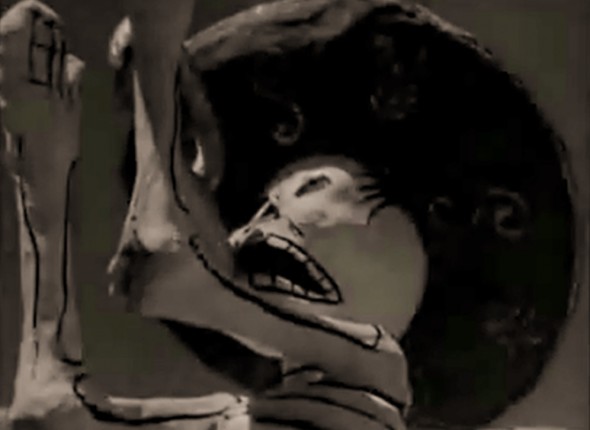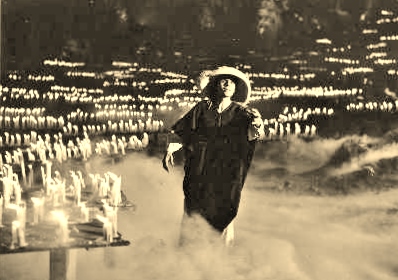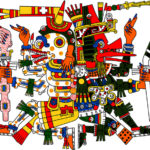B. Traven’s Macario (1960) weaves a tale of magical realism – with special appearances by God, the Devil, and Death. It all begins on the Day of the Dead, when a poor woodcutter named Macario goes on a hunger strike. Traven, the mysterious German writer exiled in Mexico, wrote the story inspired from Indigenous folk tales.


The film Macario is a 1960 Mexican supernatural drama directed by Roberto Gavaldón and starring Ignacio López Tarso and Pina Pellicer. Based on the B. Traven’s novelette The Third Guest, set in the Vice-royalty of New Spain (colonial Mexico), it weaves a tale of poverty and imagination, surrounded by the struggle between the few landed Spanish-descended gentry and the many poor, just looking to survive. It is a journey of magical realism — where supernatural visits cross the boundaries between the living and the dead, and investigates the indigenous-influenced beliefs of Day of the Dead, and the powerful dream of revolution.
STORY: B. Traven: Underground Anarchist in the Mexican Jungle
![(1960) Macario [Roberto Gavaldón, B Traven] [subs: en es it tr]](https://wilderutopia.com/wp-content/plugins/wp-youtube-lyte/lyteCache.php?origThumbUrl=https%3A%2F%2Fi.ytimg.com%2Fvi%2Fl75YkBypyn0%2F0.jpg)
Watch this video on YouTube
B. Traven’s Macario, Directed by Roberto Gavaldón
The first Mexican film to be nominated for Best Foreign Film at the Academy Awards, Macario features evocative cinematography of the Taxco environs high in the mountains of the Pacific State of Guerrero, Mexico, blended with surrealist imagery of sacred caves, monumental churches, and dreams animated by skeleton puppets.
As well, the mysterious B. Traven, a presumed German author living in Mexico City (The Treasure of the Sierra Madre is his most famous work), whose identity has never been certain, said he drew the plot from a Mexican folk tale. The novel is part of an anti-capitalist trilogy, The White Rose (a US oil company attempts to buy indigenous land) and Autumn Days (a study of Mexican middle class culture), all made into films by Galvaldon. Most accounts agree that Traven spent his youth in Germany and took on the pseudonym Ret Marut – becoming a revolutionary/writer/actor during World War I. When forced to flee Germany, Traven settled in Mexico. His first novel Das Totenschiff (The Death Ship) was published in 1926. The story about an American sailor without a country was named by Albert Einstein as the book he would take with him to a desert island.
The breathtaking visual atmosphere is created through the amazing camera work of Gabriel Figueroa. Also entered into the 1960 Cannes Film Festival, it lost to Federico Fellini’s La Dolce Vita, as well as films by Luis Buñuel and Ingmar Bergman, both major inspirations for director Gavaldón. The film received criticism from nationalists in Mexico when released because it depicted an indigenous peasant worldview, more likely made for the tastes of a foreign viewer.


The worship of the dead comes from the indigenous culture for the last 8,000 years, but in the 16th and 17th Centuries, their customs and beliefs were mixed with those of Christianity. Hence, their rites and practices are a combination of both cultures up to the present day. – from “Macario”
B. Traven’s story is set in the post-colonial Mexico in full Dia de los Muertos (Day of the Dead) festivities in Taxco. That day of remembrance and celebration of the dead is when poverty stricken Macario (Ignacio López Tarso), a farmer who sells firewood to support his large family, shares an indulgent turkey feast with Death himself.
Moved by Macario’s willingness to share with him, Death gifts him the power to heal the sick and by extension the means to lift himself out of poverty. Macario’s powers incur the suspicion and wrath of the Holy Inquisition. Contributing to the eeriness, composer Raul Lavista’s score combines tradition and surrealism – often distorting sounds from traditional Mexican instruments to create chillingly uncanny pieces. Lavista continued to score in Mexico working mostly with Luis Buñuel while Figueroa, who studied under Gregg Toland, went on to become a highly renowned cinematographer in Mexico and Hollywood, shooting over 200 films. Macario is both a meditation on the inevitability of death and an entertaining film that pushes boundaries of conventional filmmaking.
Updated 16 December 2021













Pingback: Drumming and Dancing on Day of the Dead | WilderUtopia.com
Pingback: Death By Misadventure: Malcolm Lowry's Gin-Sopped Volcano | WilderUtopia.com
Pingback: B. Traven: Underground Anarchist In The Jungle | WilderUtopia.com
Pingback: Foreshadows of Ghosts – The Landscapes of Apichatpong Weerasethakul